Lea Wait's Blog, page 72
January 20, 2023
Weekend Update: January 21-22, 2023
 Next week at Maine Crime Writers there will be posts by Matt Cost (Monday), Kate Flora (Tuesday), Charlene D’Avanzo (Thursday), and special guest Kristen Seavey (Friday).
Next week at Maine Crime Writers there will be posts by Matt Cost (Monday), Kate Flora (Tuesday), Charlene D’Avanzo (Thursday), and special guest Kristen Seavey (Friday).
In the news department, here’s what’s happening with some of us who blog regularly at Maine Crime Writers:
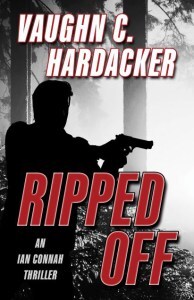
RIPPED OFF
Encircle Publications of Farmington, Maine will release Vaughn Hardacker’s seventh thriller, RIPPED OFF, on Wednesday, January 25, 2023. It is can be purchased or ordered via all of the major book vendors.
Matt Cost was part of a panel on predicting the future on Technology Revolution Radio with Bonnie Graham. His prediction was that audiobooks will start being released by chapter, much like a Netflix series or Sunday Night Radio in the 1950’s. Wolfe Trap was recently released on audiobook. Mind Trap, Velma Gone Awry, and Mainely Fear are soon to follow. Check it out here: https://www.voiceamerica.com/episode/140906/technology-revolution-2023-crystal-ball-predictions-special-5
Matt Cost will be on Big Blend Radio next Thursday at 2 p.m. talking about his upcoming release, Velma Gone Awry, which is a a 1923 historical PI mystery set in Brooklyn, NY. Check out what he has to say here: https://www.blogtalkradio.com/big-blend-radio
An invitation to readers of this blog: Do you have news relating to Maine, Crime, or Writing? We’d love to hear from you. Just comment below to share.
And a reminder: If your library, school, or organization is looking for a speaker, we are often available to talk about the writing process, research, where we get our ideas, and other mysteries of the business, along with the very popular “Making a Mystery” with audience participation, and “Casting Call: How We Staff Our Mysteries.” We also do programs on Zoom. Contact Kate Flora
January 19, 2023
You’re Crazier Than the Weather, Charlie
 Another of my old teachers died last week. Charles Simic was a Pulitzer-Prize winning poet, a MacArthur grantee, and a well-loved teacher at the University of New Hampshire. He died in Dover, NH of complications of dementia. He was also a former Poet Laureate of the United States, and when he started to become famous, turned down many offers to relocate his art and his teaching to more famous institutions than the state university of New Hampshire. He said in an interview that he had a tree on his property that he could not leave.
Another of my old teachers died last week. Charles Simic was a Pulitzer-Prize winning poet, a MacArthur grantee, and a well-loved teacher at the University of New Hampshire. He died in Dover, NH of complications of dementia. He was also a former Poet Laureate of the United States, and when he started to become famous, turned down many offers to relocate his art and his teaching to more famous institutions than the state university of New Hampshire. He said in an interview that he had a tree on his property that he could not leave.
Back when I thought I was a poet, I was delighted to discover his absurdity and his delicate way with words. The obituary in the New York Times quoted several of his better-known poems, but the one I loved the best, and which, to this day, defies my search for meaning:
The truth is dark under your eyelids.
What are you going to do about it?
The birds are silent; there’s no one to ask.
All day long you’ll squint at the gray sky.
When the wind blows you’ll shiver like straw.
A meek little lamb you grew your wool
Till they came after you with huge shears.
Flies hovered over open mouth,
Then they, too, flew off like the leaves,
The bare branches reached after them in vain.
Winter coming. Like the last heroic soldier
Of a defeated army, you’ll stay at your post,
Head bared to the first snow flake.
Till a neighbor comes to yell at you,
You’re crazier than the weather, Charlie.
Is this winter he’s talking about? I doubt it’s that simple, though shivering like straw in the wind could let you conjure that. The flies hovering, the branches reaching, all of the images are delightful to me, and impenetrable. You could shoehorn all kinds of meanings and ascribe many intentions, but you will eventually slide down into such deep water, you’ll drown in your possibilities. I’ve given up trying to parse it.
As a teacher, Simic had a different voice than his poems. He was quietly thoughtful, respectful of a student’s fumbling for ideas, patient. My last connection with him was in a graduate course in American literature, and unlike some poets I’ve known, he had a deep knowledge of and an appreciation for, the beauty of a prose line, the power of a narrative.
I don’t know if I can imagine a worse end for someone so devoted to words and poetry than to lose his memory and to lose his language. I only hope, in a perverse way, that the dementia also took away his awareness of what he was fading. Ave, Charles. You left a mark.
January 18, 2023
On Ignoring Private Property Signs … and More

Winter Vigil: Raven knows that squirrels’ tunnels all lead here…..
Sandra Neily here: With a bit of everything: recent lines from book #3, some great Maine winter events to join that fit into the spirit emerging in my novel, and a repeat, by request.
*********
(In novel #3, “Deadly Assault,” Patton and Pock are spending the night high up in a tree stand built by her old wildlife biologist boss.)
Lit by a full moon so intense my shadow copied me as if I had quiet company, I scraped lynx scat off the floor boards, hauled up the backpack I’d clipped onto another rope, and thought about the towel I’d brought for my dog to sleep on. He snored on the Colonel Bisbee sleeping bag, so I lifted its edges over his shoulders. If I spooned inside with him later, I’d have dog warmth—some violent twitching and dream yelps, but that was expected.
I pulled a chair over to the edge of the deck, drank the rainwater collected from Ken’s funnel and hose system, and chewed on beef jerky. Thoreau’s book of Maine travels sat on my lap, but I didn’t need it open, and I didn’t daylight either. Spread out before me was the same kind of forest he saw hundreds of years ago.
Burnt Jacket’s steep slopes sent clear streams tumbling down into lowlands where beavers dammed the current into pools. Bogs and wetlands ringed by soft, green moss fed ducks and countless other creatures. Individual trees disappeared into black, shaggy shapes looming over clearings lit by shafts of light. House-sized boulders abandoned by retreating glaciers glinted as the moving moonlight caught minerals that winters had scoured to the surface.
Two deer tiptoed up the game trail, snorted as they caught human scent, and crashed away into the trees. During the night other hooves, paws, and slithering small ones would use this trail. Like the moving moonlight, they’d flow across the landscape, hunting up high or down low near water, hiding in snags of ancient trees or in muddy dens. Everyone who lived within the reach of the moon’s rays knew no boundaries and ignored all the Private Property signs. I envied them.
Gilsland Farm Bird Walks – Winter hours
Beginning in December, walks shift to 8-10 am for the winter. Free, no registration required. Join us for a weekly bird walk at Gilsland Farm, led by Maine Audubon’s Staff Naturalist Doug Hitchcox and others. Meet in the parking lot, in front of the Visitor Center, where we’ll begin a slow walk around the property to look and listen for birds using Gilsland’s diverse habitats.

Lily Bay State Park
Kennebec Land Trust 2023 Lyceum Lecture Series
Maine’s State Parks and Public Lands: Conserving Nature, Managing People, and Embracing the Future
Thursdays March 16, March 23, and March 30 ~ 6:00 – 7:30 PM
Winthrop High School Auditorium
Join Kennebec Land Trust for our annual winter lecture series to learn more about Maine state parks and public land from Maine State staff.
Recreational and Cultural Importance of Maine’s Parks and Public Lands
Thursday, March 16, 2023, 6:00 – 7:30 PM
Conservation of Wildlife and Biodiversity of Maine’s Parks and Public Lands
Thursday, March 23, 2023, 6:00 – 7:30 PM
Looking Forward: Land Acquisition Partners and Priorities
Thursday, March 30, 2023 6:00 – 7:30PM
*********************
Apologies for reposting something so soon (see below), but I when I sent this out December 23rd, many, many folks were like me: buried in the run-up to holiday cooking, wrapping, pleasant sipping, or just watching the moon rise.
My friends and relatives who got a link to it in holiday e-letters, encouraged me to share it again in the new year.
Lately I’ve been thinking a lot about good and evil and feeling the power of evil way too much. Over two decades ago I wrote a letter about good and evil to my daughter as she was deep in despair after September 11th.  Today I share it with you on the darkest night of the year. More light coming soon…
Today I share it with you on the darkest night of the year. More light coming soon…
********************
September 12, 2001
Today I woke, thinking of the plane hitting the World Trade Center… and thought of you and how you told me last night that you did not want to live in such a bad world.
When I was a sophomore in high school, I turned away from my “church” religion because no one at my church could explain why children suffered and died in huge famines, floods, and wars. Years later, in college, reading widely about how people have always tried to reconcile the nature of both good and evil existing in the world, reading about how we have evolved into better creatures while at the same time committing atrocities against each other, I must have come to my own resolution about good and evil.
I hope that you will also come to your own understanding and not feel defeated by yesterday’s horrors.
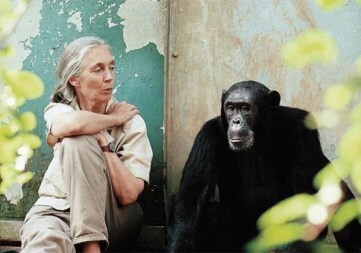
“It is these undeniable qualities of human love and compassion and self-sacrifice that give me hope for the future. We are, indeed, often cruel and evil. Nobody can deny this. We gang up on each one another, we torture each other, with words as well as deeds, we fight, we kill. But we are also capable of the most noble, generous, and heroic behavior.” ― Jane Goodall, Reason for Hope: A Spiritual Journey
In fact, recently, you gave me a reminder of how we accept evil and good as part of our world, how we find triumph and goodness in the middle of despair. You asked me to read Jane Goodall’s book “A Reason For Hope” and I did. Jane thought the world of the chimps was a more perfect, natural world. Their society was caring and nurturing; how could humans be destroying such creatures, she thought. She and her research staff were shocked to witness the chimp wars where (probably maintaining territorial control) they snatched and killed the babies of family members, pulled apart chimps they had known for years, and committed various atrocities against each other.
It was a dark time for her. This darkness was reflected in the evil Jane felt around her as the jungle was destroyed and as she came to feel strongly about our cruelty to animals in labs and research. At the end of her book, she comes through the darkness, sees beyond the evil to the essential goodness in the chimps, to our ability as humans to make progress: regrow the jungle, plant trees, enact new laws and procedures for lab animals, develop products without animal testing. Faced with evil in a very personal way, she decides that hope and goodness are the stronger element and she finds clear examples of their stronger powers.
I hope that you do too.
Humans have always had to deal with the problem of evil. Every culture tries to explain how they are related, linked, even useful to each other. Without the blackest darkness of night, could we celebrate the rippling sunshine on rivers. Can we know the light—feel the joy of light—without knowing the darkness? That is the question.
 Christians believe the Bible’s good and evil origin story. Eve is expelled from the Garden of Eden (a perfect place where there is no good or evil), because she listens to the devil (serpent) and eats the apple that gives her the knowledge of good and evil. God expels her from the garden, saying she will live this knowledge. She will “bring forth children in pain.”
Christians believe the Bible’s good and evil origin story. Eve is expelled from the Garden of Eden (a perfect place where there is no good or evil), because she listens to the devil (serpent) and eats the apple that gives her the knowledge of good and evil. God expels her from the garden, saying she will live this knowledge. She will “bring forth children in pain.”
So he sent us out with pain, but in this story, he sent us out with children. And for me, (as you know) that has been the greatest gift. In our creation story, we were sent out with both pain and joy … and children.
All cultures around the world have stories about the origins of good and evil, but always the good—the hope—triumphs.
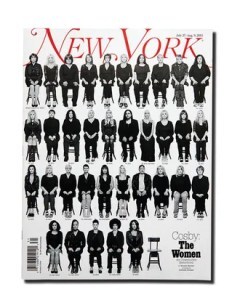
Magazine cover: Bill Cosby’s accusers.
I can-actually see that around me. When I was your age, assaulting women was considered a private affair or not worthy of much attention. Unless the woman died. Now we have evolved to understand the evil of the misuse of power and rage. Women (in many countries) have the right to a safe life. Does this stop the evil of abuse? Not always, but we made progress recognizing the value of women and their right to be protected.
I see this evolution as the triumph of good, not in a perfect world, but the growth of goodness because we are working to protect and take care of people and we did not do that before.
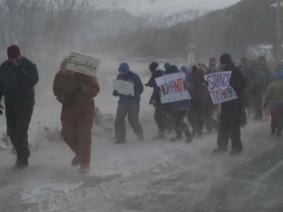
Haines, Alaska’s version of the Women’s March. January 21, 2017

In Maine, The Great Works dam comes down. In the text, check the amazing video link to the story.
Years ago, people tried to dam every river in sight. Even today in China, the mighty and gorgeous Yangzee is dying underneath the crime of the biggest dam on the planet. I believe that one day, the Chinese will know the evil of this crime against nature. Here today, in our country the dams are starting to come down. I never thought that in my life, I would see this turn of events, that people would see this particular evil, this crime against the value and health of rivers and actually begin to reverse the process. I do see examples of the triumph of goodness and knowledge over the forces of darkness, evil and ignorance.
But I do believe we will always have both in the world.
Last night after you went to bed, on the news they showed the long lines of New Yorkers waiting to give blood: out the hospital doors, down the streets—people all waiting hours to give blood, to do what they could. That is an image of powerful good that is at least as powerful to me as the one of the plane slamming into the building.
I know that you have experienced your own darkness, but you have been lifted up and carried on by the goodness and light of the many people who love you and have helped you through the darkness. I know you must sort out your own personal truth about good and evil.
I wrote you this letter to let you know that we are all on a search, we all have moments of doubt, and that we all have questions about evil. For me, the goodness of your being here outweighs any evil the world may toss my way. I have confidence that you will find your way as you walk between the darkness and the light; and I DO love you more than all the chocolate chip cookies on earth.
Moo
******************

Thank you for the tree, Bob!
Sandy’s debut novel, “Deadly Trespass, A Mystery in Maine” won a national Mystery Writers of America award, was a finalist in the Women’s Fiction Writers Association “Rising Star” contest, and was a finalist for a Maine Literary Award. The second Mystery in Maine, “Deadly Turn,” was published in 2021. Her third “Deadly” is due out in 2023. Find her novels at all Shermans Books (Maine) and on Amazon. Find more info on Sandy’s website.
January 16, 2023
Easy fast and no-brainer top writing tips for all writers

Writing isn’t always easy and neat. That’s what makes it so fun!
Hi, all! I was asked just the other day for some “writing tips,” so it seemed like a good time to reprise this classic from a couple years ago.
And also, in the spirit of Tip Number 1, I have a book to work on. So….
Got you with that title, didn’t I? Seriously, though, it’s a reality that all writers — beginners and veterans — want tips. We write about them on this blog freqently. Just in the past few days, I’ve been asked for some by a variety of people. Yes, that’s right. Me.
Writers can debate, and do all the time, what “good” and “bad” tips are. We could write thousands of blogs of writing advice and still not cover it all.
That said, here are some quick tips that I think most writers would agree are universal. They’re probably things you’ve heard before, but that’s because they work.
The book won’t write itself. That’s right — no matter how many tips, tricks, hacks or whatever, you have to just sit down and write it. If you don’t believe me, read Stephen King’s “On Writing.”Write what you “know,” but more importantly, know what you write. There’s nothing wrong with branching out, otherwise we’d all be writing about writers sitting in a room thinking about writing. But make the effort to gain deep knowledge that’ll enhance your book. Visit the sites, talk to people (or at least eavesdrop on conversations), move past what “everyone” knows to the things only a few do. Research has never been easier with the worldwide web. But visit the newspaper archives at the Maine State Library or newspaper.com, out-of-the-way historical societies, read books about your topics — the possibilities are endless. Nuances and insight will enrich any story.Read. The more you read, the more variety you read, the more your world and imagination expand. Read everything you can get your hands on and never stop.Read bad books. Good books are great, but most readers tend to get lost in the story because, duh, the book is good. I’ve learned more about the basics of writing from reading bad books and seeing what could’ve done better than I ever have reading good ones.Know the basics. You don’t have to go get an MFA in creative writing or even drop a ton of dough on writing courses, but put that Strunk & White that you have somewhere around the house to use. More importantly, go online and find information about writing basics and brush up. I was a judge for years in the Writers Digest self-published contest, and can say with certainty that many writers just don’t know the basics. I’m talking about things like clauses that don’t match subjects, a universally chronic issue; misuse of prepositions; innacurate or inconsistent tense; you name it. No one is going to be a perfect writer, but the better you know the basics, the better you’ll be at telling your story. Know the bigger stuff. Writers who understand things like point of view shifts, when to use exposition and when not to, how to weave in background, and more will have better books than those who don’t. When I was a freelance editor, I’d sometimes get pushback from writers saying, “But [insert famous writer’s name here] doesn’t [insert writing basic here].” That’s fine for them, but for the rest of us, knowing that stuff and doing it correctly will only help.Know your voice. Don’t be afraid to be yourself when you write. There may be people — your writer group, an editor, your spouse — who want you to water it down and be more generic. If you know the craft and understand what your voice is and why you’re doing what you’re doing, let it fly. Yes, I know I said I learn more from bad books than good ones, but one big thing you can learn from good books is how good writers find a way to let their voice shine through. Two of my favorites are Elinor Lipman and Carl Hiaasen, two very different types of writers who have unique voices and write beautifully.Don’t be afraid of your imagination. Similar to voice, let your imagination go where it will. Again, if you know the craft well enough, you can make it work. Don’t be afraid of it. But also understand what’s important and what isn’t to make the story work.Have a structure in mind. If you are at all involved with writing, you’ve heard the whole “pantser” and “planner” thing. You know there isn’t one “right” way to go about it. That said, at some point, you have to figure out where the book is going, what works, what doesn’t, and give it some structure. I usually start my books with a vague idea of where it’s going and I usually have an ending of sorts, and then I see where the writing takes me. That means I’m constantly outlining, beginning when I get to about the 100-page mark, to stay on track. Then I go back, adjust things, move things, re-outline, etc. until it’s finished. I know that sounds exhausting, but I actually enjoy it. You don’t have to do it my way, but just be sure you at some point start figuring out where you’re going, what’s working, what is extraneous and how it’s all going to tie together.Pay for a good professional editor. This is a must for those hoping to get an agent or publisher, or to hit it big with their indie book. It’s also useful for someone with a publishing contract so they can send a nice tight manuscript to the publisher. I no longer do freelance book editing, so this isn’t a plug for my services. But I’ve read hundreds, yes hundreds, of indie books for the Writer’s Digest contest and the No. 1 issue is that almost every single book is not well-edited. Almost every single one. While everyone seems to know someone who’s awesome at finding typos, and that’s a good person to know, that’s not what editing is. When I finish my first draft, I have four to five readers; then, once I’ve done revisions, I have one or two who check for typos, spelling etc. Then I get the book edited. So, for those who have someone who does that for them, that’s great. Once that’s done, send it to a professional editor. Good book editing means not only knowing the things in No. 5, but also the things in No. 6. And, no matter how much you think that friend or spouse, or whoever, will be “honest” with you, someone who is a professional and paid to do it actually WILL be honest.It’s important to ask around and do some research. Ask other authors, check out books the editors have said they’ve edited. You can find freelance editors at a number of places online, including the Maine Writers & Publishers Association and the Editorial Freelance Association website. I would strongly recommend NOT going through an online editing service (a blog post for another day), but rather find someone through word of mouth or professional references. Reach out to people whose books you like that are well-edited, organizations that help writers and other reliable sources.
An editor can be good and still may not be right for you. You want someone who understands you and your book. That’s why it’s important for YOU to understand your book, and why the first nine tips are important.
If you think editing costs a lot of money, you’re right. It’s one of the most undervalued professions out there, because everyone knows someone who’ll do it for free. Scrape your dough together, though, and find someone who’ll actually do well.A final bonus tip: While it’s hard work, you should also get some joy out of writing. If you don’t get any joy out of it, assess what your goal is and why you’re doing it.I know I’m kind of a broken record on this, if you’ve been reading my blog posts over the years, but if writing sounds like a lot of hard work, it’s because it is. As a book editor and judge in the Writer’s Digest contest, I’ve found it’s easy to see who’s willing to do the work and who isn’t. One of my favorite quotes is from Thomas Edison, who said, “Opportunity is missed by most people because it’s dressed in overalls and looks like hard work.”
January 15, 2023
1968
Kathy Lynn Emerson/Kaitlyn Dunnett here. Today is Martin Luther King day. Dr. King (born January 15, 1929) was assassinated on April 4, 1968, almost fifty-five years ago. Thinking about that, I’ve been trying to remember my reaction to his death. Sad to say, I can’t even remember hearing about it at the time.
 I suppose it isn’t too surprising that I wasn’t paying much attention to anything outside my own little bubble. I was twenty and a junior at Bates College. As regular readers of this blog already know, I tend to hang onto mementos, so I still have my wall calendar from 1968. In the square for April 4 there are three notations. It was my father’s birthday. He was fifty-eight. There was a band concert at 9 PM. And Rob Players elections were scheduled for 8:15. Robinson Players took up a large portion of my free time. We were in final rehearsals for a reprise at graduation of our March 29 and 30 production of Much Ado About Nothing, for which I was one of three student directors. Finals were about to start because Bates had a two-full-semesters-and-one-short-term year. And in just eighteen days I would be on my way to Germany to meet (and break up with) a boyfriend who was stationed there in the U. S. Army.
I suppose it isn’t too surprising that I wasn’t paying much attention to anything outside my own little bubble. I was twenty and a junior at Bates College. As regular readers of this blog already know, I tend to hang onto mementos, so I still have my wall calendar from 1968. In the square for April 4 there are three notations. It was my father’s birthday. He was fifty-eight. There was a band concert at 9 PM. And Rob Players elections were scheduled for 8:15. Robinson Players took up a large portion of my free time. We were in final rehearsals for a reprise at graduation of our March 29 and 30 production of Much Ado About Nothing, for which I was one of three student directors. Finals were about to start because Bates had a two-full-semesters-and-one-short-term year. And in just eighteen days I would be on my way to Germany to meet (and break up with) a boyfriend who was stationed there in the U. S. Army.

gendarmes blocking the road to the Sorbonne
That trip was . . . interesting. In addition to seeing some of the usual tourist sites in Germany, England, Scotland, and France, I ended up as an eyewitness to two sets of student riots. The first was in Leeds, England, where we stopped to visit a college friend who was in the Junior Year Abroad program. The second was in Paris. I wrote “riot following” on my calendar on May 11. Wikipedia’s list of significant events for 1968 lists “Paris student riots” as taking place on May 13, but by then I was back home. I’m not entirely sure what any of those students were protesting, but I know the gendarmes were out in force to stop them. Another JYA friend, this one in Paris, advised us not to speak English in case the riot turned anti-American.

students marching as seen from safe window perch
Sometime in first few weeks after I returned to my parents’ house in Walden, New York and went to work sorting checks at a local bank, Bobby Kennedy came through the area on his campaign for President. I remember going to see him and shaking his hand and being completely turned off by how squishy it felt. On June 5 he was assassinated. That I do remember. I’m not sure he would have made a good president, but given that Richard Nixon was elected that November, he couldn’t have been worse than what we ended up with. Since I turned twenty-one in October, that was the first election I voted in, casting my ballot for Hubert Humphrey and (Bates graduate and Maine Senator) Edmund Muskie.
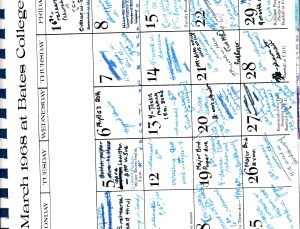
But I’m getting ahead of myself. The calendar for June, July, and August consists mostly of entries that read either “Sandy called” or “called Sandy.” Yup. My future husband was definitely in the picture. He had been waiting in the wings, literally, and on the first of July he asked me to marry him. There were several visits back and forth between New York and Maine until, in September, we started our senior year together. We made our engagement official on the twenty-first of November when he put a ring on my finger during a performance of Barefoot in the Park. He was on stage as the telephone repair man at the time and I was on stage crew, holding onto a door in the set that wouldn’t stay closed on its own. We came face-to-face, out of view of the audience, just long enough to create a truly unforgettable moment.
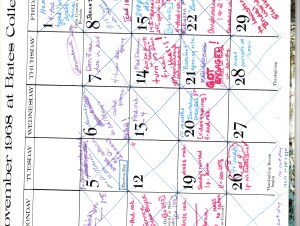
As you can see from the pages shown here, every day was busy. Catching the news was a low priority. I probably knew about the first Apollo missions, but they didn’t make much of an impression. Ditto on the Olympics—winter games in February in France and summer games in Mexico in October. Reports from Viet Nam and news of anti-war protests during the Democratic National Convention in August struck more of a chord, but that was mostly because my father thought all demonstrators were “communist dupes” and I, although I was not one of them, strongly disagreed. Just a year later, Sandy and I were married and he had joined the U. S. Navy in order to avoid being drafted.
Like any given year, 1968 had both low points and highlights. On a national and international level, things were not great, but I have no complaints about the personal side of my life. Most of those memories are pretty darn good.

Bates “pin” given as place holder for engagement ring
Kathy Lynn Emerson/Kaitlyn Dunnett has had sixty-four books traditionally published and has self published others, including several children’s books. She won the Agatha Award and was an Anthony and Macavity finalist for best mystery nonfiction of 2008 for How to Write Killer Historical Mysteries and was an Agatha Award finalist in 2015 in the best mystery short story category. She was the Malice Domestic Guest of Honor in 2014. Her most recent publications are The Valentine Veilleux Mysteries (a collection of three short stories and a novella, written as Kaitlyn) and I Kill People for a Living: A Collection of Essays by a Writer of Cozy Mysteries (written as Kathy). She maintains websites at www.KaitlynDunnett.com and www.KathyLynnEmerson.com.
January 13, 2023
Weekend Update: January 14-15, 2023
 Next week at Maine Crime Writers there will be posts by Kaitlyn Dunnett/Kathy Lynn Emerson (Monday), Maureen Milliken (Tuesday), special guest Albert Waitt (Wednesday) Sandra Neily (Thursday), and Dick Cass (Friday).
Next week at Maine Crime Writers there will be posts by Kaitlyn Dunnett/Kathy Lynn Emerson (Monday), Maureen Milliken (Tuesday), special guest Albert Waitt (Wednesday) Sandra Neily (Thursday), and Dick Cass (Friday).
In the news department, here’s what’s happening with some of us who blog regularly at Maine Crime Writers:
from Kaitlyn Dunnett: Not exactly news, just fun. I have just completed the 1000 piece jigsaw puzzle given to me by my nephew and his wife. Look familiar?

The puzzle was produced by Shutterfly from a photograph.
Kate Flora: Has no news but is excited to have found someone who will make a book trailer for her book coming in May, Teach Her a Lesson. Which leads to a question for you: Do you like book trailers? Do you watch them? Would on persuade you to buy a book?
Meanwhile, while we are awaiting February, the crazy month, you will have noticed that some of us are blogging about the trials of winter. Here are some photos from winters long ago, back when Maine had serious winter.

Looking at 1000 East Sennebec Road from the south hayfield

Kate and her dad bringing back a Christmas tree
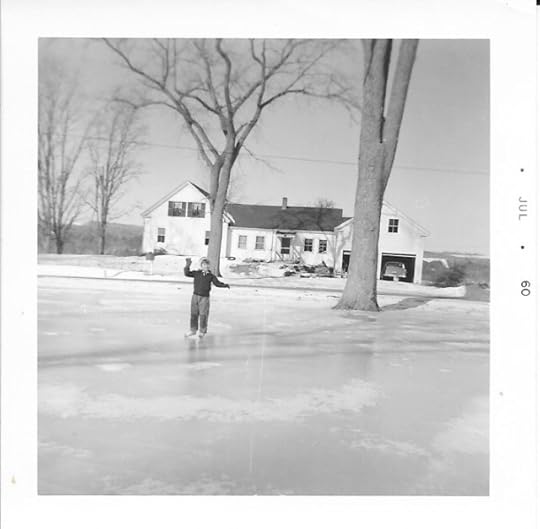
Skating on the pond across the street
An invitation to readers of this blog: Do you have news relating to Maine, Crime, or Writing? We’d love to hear from you. Just comment below to share.
And a reminder: If your library, school, or organization is looking for a speaker, we are often available to talk about the writing process, research, where we get our ideas, and other mysteries of the business, along with the very popular “Making a Mystery” with audience participation, and “Casting Call: How We Staff Our Mysteries.” We also do programs on Zoom. Contact Kate Flora
Winter Woes
Confession: While I have lived in Maine much longer than New York, the state of my birth, I have never really acclimated to Maine winters. Or winters of any location. Growing up on Long Island, I walked a mile to high school with a cello and, in the days before backpacks, an armful of books. Not exactly uphill both ways, but close enough, with the snowbanks taller than I was and the sidewalks slippery. It will not surprise you that I dropped out of orchestra after my freshman year and ditched that cello.
As for outdoor activities in crowded suburbia? You needed real money for travel and equipment to learn how to ski back then, and my family certainly didn’t have that. I did own a pair of ice skates, and I religiously turned both ankles at every opportunity at the local rink. Building a snowman gave me only brief bragging rights before my artistic endeavor turned into a puddle and my gloves got soggy. So being a bookish child and wise beyond my years, I mostly stayed indoors and read until the forsythia bloomed.
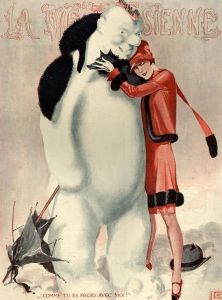
As a mom of four, I spent forever dressing the kids in snowsuits, boots, and mismatched mittens, only to have them come in after ten minutes begging for hot chocolate with lots of marshmallows. Before we moved recently, we lived down a long, intimidating icy camp road in Belgrade, which gave me good reason to hibernate and not crash my car into the house. Or the lake.
So, it’s fair to say I’m indifferent to winter’s wonders, except for its depiction on Christmas cards and calendars. My website bio even says, “A transplanted New Yorker, she lives in Maine, where the cold winters are ideal for staying inside and writing historical mysteries and romances.” But one must do more than write and occasionally stare out the window at Nature’s chilly beauty to occupy oneself. If you are hermitting until mud season like me, here are some suggestions to pass the time.

I am very late to the Inspector Gamache series, having read the first (of 18!!!), Still Life, last week. I have to say the numerous point of view shifts (even within paragraphs) drove me a little—okay, a LOT—crazy, but Louise Penny has created an intriguing world. I highly recommend watching the 8-part Three Pines on Amazon. Alfred Molina is merveilleux as the Montreal detective hero. Fortunately, my high school French (along with closed captioning) is sufficient, and I’m wildly impressed that the cast slips from French to English so effortlessly. I’m now curious about watching the earlier series, Still Life with Nathaniel Parker as Gamache, even if I know who dunnit now.
The second season of Whitstable Pearl on Acorn finds the two appealing lead characters romantically involved with others, yet they work together as PI and DCI to solve some coastal crimes. Lovely Kentish seaside scenery, and the food in Pearl’s restaurant looks fabulous.
I recently finished the Boston-set The Woman in the Library by Sulari Gentil. The book’s structure defies conventional description, so I won’t even try. If you like a riddle wrapped in a mystery inside an enigma, this will be a satisfying read.
Elly Griffiths’ third book in her Harbinder Kaur series, Bleeding Heart Yard, has the policewoman relocated to London. It can be read without knowledge of the first two books, but it is delightful to see Harbinder grow into her job and independence. Griffiths creates quirky, very real characters (see also her Ruth Galloway and Magic Men/Brighton mysteries) and I’ll buy anything she writes.
All three Skelton’s Guides books by David Stafford are fun and very funny: Skelton’s Guide to Domestic Poisons, Skelton’s Guide to Suitcase Murders, and Skelton’s Guide to Blazing Corpses. Set in the late 1920s in England, awkward Arthur Skelton is a reluctant legal lion, with a slew of very unusual companions and relatives.
So, that might keep you entertained until spring. Or at least until Groundhog Day. You know what I’m hoping for. No shadow! What can you recommend for me?
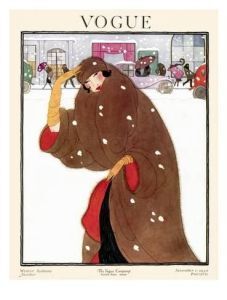
For more info on Maggie and her books, please visit www.maggierobinson.net
January 11, 2023
The Sun Ain’t Gonna Shine No More…

Vaughn C. Hardacker
Vaughn Hardacker here: As I write this, I look out the window at a dark, dreary day with below-average snow on my lawn (I can see grass spots!). If you wonder if I am complaining about that, I’m not. Why I am complaining about is that we have not had a sunny day this year. It hasn’t made an appearance since before Christmas. Every year I suffer from Seasonal Affected Disorder (appropriately abbreviated SAD), commonly called seasonal depression, which makes every day a battle.
Many of us have been asked why there are so many mystery and horror writers from Maine. At a writer’s event, Tess Gerritsen was asked this question, and she replied: “Long, dark winters.” In my case, the opposite is true. I become so down it takes all of my energy to get out of bed in the morning, and my productivity as a writer is Slim, and none–and Slim left town. The only thing that seems to become active is my random excuse generator. I can come up with hundreds of reasons why I can’t write. I have a SAD therapy light to brighten up the room (I’m told to restrict its use to two to three hours a day–which means I only have to find a way to cope with the other twenty-one hours a day) and have been prescribed an anti-depressant, but neither do much.
A major component of the problem is where I live. At one time or another, we’ve all been asked what living in Maine is like. The usual answer is nine months of winter and three months of poor sledding. I think back to my youth (yes, I can still remember that far back), and all of my memories seem to be of winter. As for summer memories, well, I may as well have dementia… they are few and far between.
How have I been trying to overcome this? For one thing, I have a friend who raises goats, and I asked to borrow one. He quizzed me, so I explained: “I want to sacrifice it and see if the sun will come out.” There’s no need to say I did not get the goat. My counselor has told me I need to find a winter activity, such as snowmobiling. I’ve been all over the area shopping for a suitable sled. Few, if any, come with heaters and FM or satellite radio. This means I would have to spend money on suitable clothes and footwear. In an economy where a small carrot cake at the supermarket went from $5 to $10, can you imagine what a suit, helmet, gloves, and insulated boots cost? I told my counselor, “If I could afford to spend that much, I’d go to Florida or Arizona…”
So, what is my alternative? I can do what I’m doing right now–complain. I can tell you that does no good. After a while, even your pets will avoid you. I can take all calendars from the house (I tried this… did no good, the heavy overcast sky is still visible through the windows.) I could move… the chances of that? You might refer to Slim above.
Looking at this blog, I wonder if I’m spreading SAD–like Typhoid Mary. If so, I permit you to say that I have a negative attitude (I do… but I looked at my calendar, and April is only 85 days away! Until then, I think I’ll take a nap.
January 10, 2023
Meet Brian Katcher
John Clark interviewing friend and fellow librarian Brian Katcher whose newest book is set in Maine.

You’re a school library media specialist in Missouri, but you’ve had some interesting travels if I remember correctly. What stands out the most?
I spent three years living in Mexico, teaching English. That was a lot longer than I had originally planned to stay, and I realized if I didn’t leave when I did, I never would. I learned Spanish, I traveled to Central America, and got to have some of the best food I’ve eaten in my life. Mexico City is my favorite city in the world.
How has your work influenced your writing?
As a librarian, I’ve seen what happens when politicians decide they need to get involved in what your children are permitted to read. Here in Missouri, the attorney general is trying to make it a crime to allow kids to read certain graphic novels. In other words, a librarian who stocks a book that the government deems ‘pornographic’ could be arrested as a sex criminal. This is a thinly veiled attempt to remove LGBTQ materials from public and school libraries. As a writer and I librarian I refuse to knuckle under to politicians who are willing to throw marginalized children under the bus in order to advance their own political agenda.
Where did you grow up and what memories stayed with you?
I grew up in St. Peters, Missouri (a suburb of St. Louis). I was a nerdy, funny kid who was afraid of girls. I think that comes through in almost all my books.
What’s living in Missouri like?
Missouri combines northern hospitality with southern efficiency. It’s a highly conservative state with large liberal enclaves. It’s kind of fun being an outlier, but what I wouldn’t give to live in some charming New England state like Vermont or New Hampshire, or…
You’ve written a number of young adult books. Let’s start with Playing With Matches which was published in 2008. I really liked it and it made me keep you on my book radar. What was the inspiration for it?
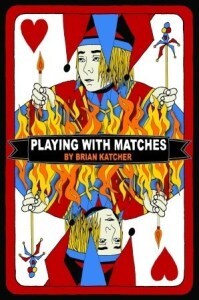
Thank you for reading! Playing With Matches is about Leon, a nerdy high school junior, who is absolutely based on myself at that age. He befriends Melody, a girl with a badly disfigured face, and wonders if they are destined to be more. The town is based on my home town, the school on my high school, Leon’s friends on my friends.
What inspired it? Well, in my favorite novel, Catch-22, the protagonist sees a girl with a badly scarred face and thinks ‘no one will ever love her.’ I thought that was rather harsh. Surely there’d be a guy out there who could see beyond her scars. I think that’s when I got the idea of a rather superficial guy realizing he was falling for a girl who is far from classically beautiful.
Almost Perfect came next and remains my favorite YA story about a transgender teen. I wasn’t the only one who wished for a sequel, but understood why one was next to impossible, Can you talk about how the book came to be?

Almost Perfect is about Logan, a heterosexual guy who discovers that the new girl in his school, Sage, is transgender. When he realizes that he’s still attracted to her, he wonders if this means that he’s gay—or if he still considers Sage to be a girl.
After Playing With Matches, I was determined to write another book before everyone realized I was just faking it. I wanted to write a boy meets girl story that hadn’t been done a thousand times already. I hit upon the idea of a heterosexual country boy and a transgender girl. Could they make it work? I tried it as a short story. The people in my writers’ group told me that there was no way that I could pull this off in eighty pages. If I wanted to tell this story, it needed to be as a novel.
I knew I was out of my depth so I turned to the internet. I went to transgender support pages and asked people if they would be willing to tell me their stories as part of my research. Their histories, especially fifteen years ago, broke my heart. The overwhelming theme was not being able to go to anyone with who they were and feeling utterly alone and misunderstood. That’s when I knew I had to tell Sage’s story.
I believe I was the second YA author to write about a transgender teen (after Luna, by Julie Anne Peters). In retrospect, I could have done a lot better. But I was proud when the book won the Stonewall Book Award.
Everyone Dies in the End was, I thought, deserving of an Edgar nomination. It had mystery, quirky characters and amazing dialogue. Where did it come from?
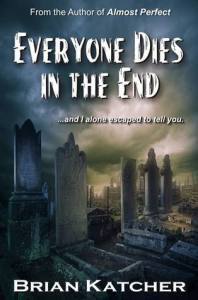
So you were the one who read it! Seriously, thanks for the kind words. I read entirely too much Lovecraft in college and became obsessed with the idea of finding a forbidden book, an isolated evil town, or a gateway to another dimension. Everyone Dies is kind of a tribute to that era, and what might of happened had I actually succeeded in my quest.
The Improbable Theory of Ana and Zak has some of the same flavor as Everyone and is also funny. What can you tell readers about it?

My editor asked me to write a book that was similar to David Levithan’s Nick and Nora’s Infinite Playlist, the story of two cool kids and a crazy night to remember. But she wanted the main characters to be nerds. I had to figure out where a couple of geek kids would go during the night. Not a club or a party or a rave. What’s a wild, nerdy place that’s open all night? Well, one of my favorite events: Comicon. I’ve been attending cons since I was a teenager, and a lot of Ana and Zak’s adventures are reflections of my own experiences.
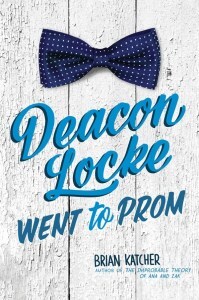
Deacon Locke Went to Prom took a most interesting look at proms. I think all of us regardless of age have some memories and feelings about proms, (that is if they went to a school big enough to have one instead of going to the gravel pit and shooting cans). What do you remember about yours?
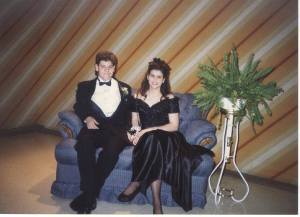
Well, when I was a high school junior I went to a Key Club convention in Kansas City and met a cute girl. We agreed to exchange letters (this was the pre internet era). Much to my surprise, her first letter was to ask me to her school’s junior prom. I, of course, agreed. The problem was, she lived in Hannibal, over 80 miles away. The only way this would work is if I were to stay the night at her house. The fact that our parents agreed to this shows what big nerds we were. It was a very fun night, somewhat soured by the fact we knew this would be our only date.
For my senior prom, it was a double date with a buddy. The girls went with us as ‘just friends.’ We were both kind of crushing on our dates, and it was an awkward evening. But I’m glad I went.

Your new book Marley’s Ghost is set here in Maine. How did that come about? It’s a very interesting look at a character who might be dead, but still plays a big role in the story. I really like it and got the sense that there’s more to come. Will there be a sequel?
I think we’ve all had that uncle, aunt, or older cousin who we looked up to, who’d let us break the rules, and who lived life on their own terms, even if the rest of the family didn’t see them that way. I wanted to tell the story of a couple of cousins who loved their Uncle Marley maybe more than anyone else did, and are having a hard time filling up the hole he left. And if that means taking the two girls they like on a treasure hunt in another state, then that’s a sacrifice they’re willing to make
I have the bad habit of leaving books open-ended, just in case the public clamors for more. Unlike with Almost Perfect, I retain the rights to these characters, so who knows?
How did the pandemic affect you and your writing?
I mean, what do writers dream about? Unlimited time to sit and home and write? Unfortunately, I found that I write better when I have the pressure of a deadline. ‘I have to have this done in a month? I’m on it.’ ‘I have all year to do this? Well, what’s the rush?’ When it was all over and done with, I don’t feel I was any less or more productive than in regular times.
This is the ‘roll your own’ part. What would you like readers of Maine Crime Writers to know that hasn’t been covered?
I’m attempting a science fiction novel. Wish me luck. Writers are some of the most creative people in the world. Here’s to a happy and productive 2023 for all of you.
January 9, 2023
Captivating TV Shows I’ve Watched
Lately I’ve been watching a lot of TV shows. Normally, I’m very selective about what I watch, but the last three dramas my wife and I sat through captivated me and made me thing about my own writing, and how I can improve. Yes, there’s a difference between novels and film, but a good story is still a good story. I believe artists can learn a lot from both mediums, and take instruction in how to better serve their work. In this post I’ll tell you about the three shows that held my attention.
SUCCESSION — Not necessarily a crime show, Succession is a thriller unlike any other drama on television. Based loosely on the life of Rupert Murdoch, I was riveted by this drama about an elderly corporate titan hesitant to pass the reins to one of his four children. This show depicts the harsh realities of capitalism in the twenty first century. And this family is as tight and ruthless as the family in The Godfather. What intrigued me most about this series is that all the characters are loathsome, and yet I still couldn’t stop watching them, and what would happen next. The dark and twisted plot moves along briskly, tight and stylistic. Their are many crimes committed, even manslaughter. The various locales are stunning, especially the scenes shot in New York City. The dialogue is so good that I took notes at times, reminding myself of the inventiveness of the show’s writers. There were a lot of twists that happened that really surprised me, and I was thoroughly disappointed when the last season ended. But there’ll be more. I highly recommend this show for writers looking to study plot, action and great characterization.

WHITE LOTUS — This show was different because the two seasons were completely unrelated, except for one dark and surprising subplot that connected the two episodes. The first season takes place on a high end resort in Hawaii. Various guests come in and out of the plot, creating high drama and mayhem. The hotel employees are just as wild and out-of-control as the guests, even more so. The second season takes place in Sicily and is as much a psychological thriller as it is a family drama. Besides being a great crime show, White Lotus takes on heady topics such as class, racism, sexual identity and fidelity. Great pacing and again, great character puts this one in the top echelon of my favorite TV shows.

MARE OF EASTTOWN — A fascinating show that is part police procedural, part family drama, and part mystery. Set in a small, working class town in Pennsylvania, Mare of Easttown delves into many complex issues. Mare is a local detective, grandmother to a young boy, and mother to a son who committed suicide. She wants to keep custody of her grandson, who is still living with her addict mother. Mare’s other daughter is a bright young student exploring her sexuality in a small town that seems close minded. The death of a young mother sets off an explosive set of events in this compelling tale. And the ending is a complete shocker I didn’t see coming. This show has great acting and moves at a slower, more deliberate pace. While not as explosive and wild as the previous two shows I mentioned, I did find this one compelling and worth checking out.
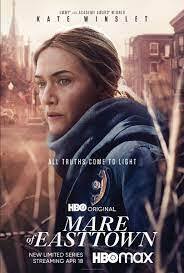
Definitely find time to watch these three dramas if you have a chance. As a writer, I found them very entertaining and instructive. I think you will too.
Lea Wait's Blog
- Lea Wait's profile
- 509 followers



